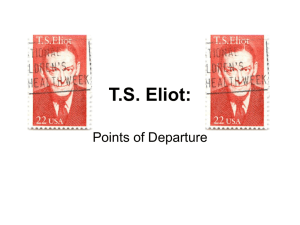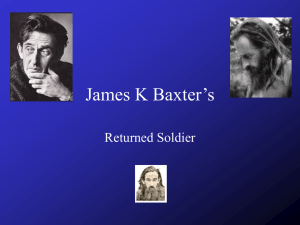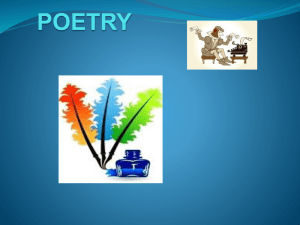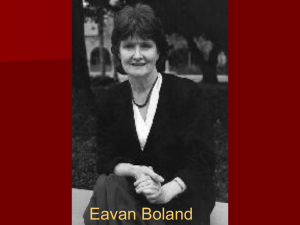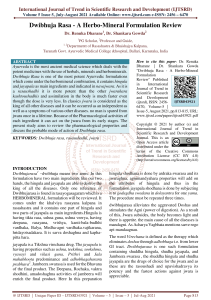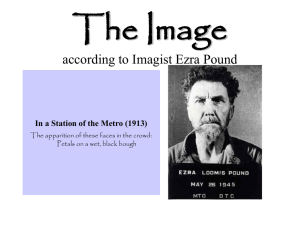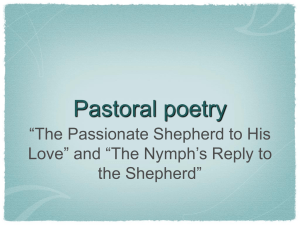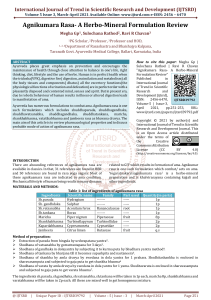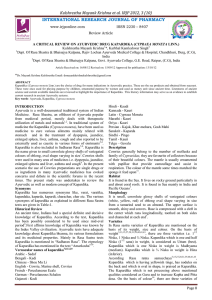Dhvani - Betsy Paul
advertisement
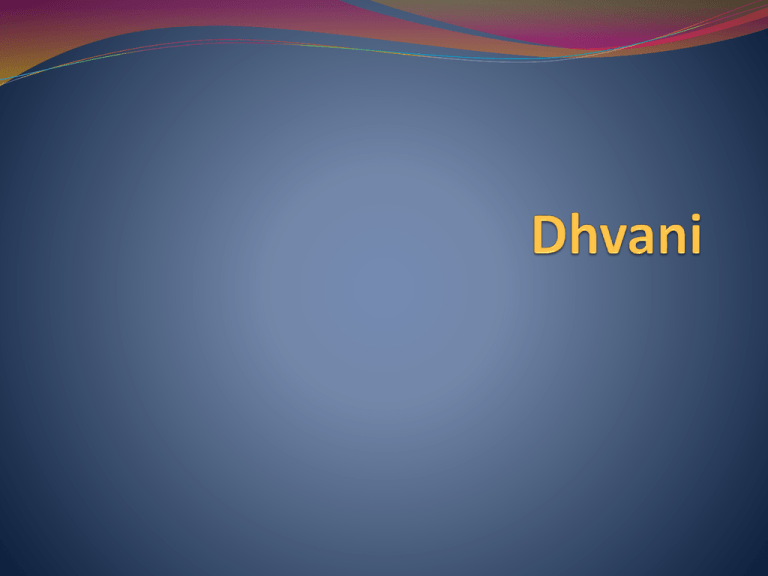
Dhvani
Echo – a good poem is one that haunts one after
reading
Taken from grammar
In grammar – sounds of utterances which reveal the
integral linguistic sign (sphota)
Dhvani
A good poem with its sound as well as the literal sense
reveals, over & above the literal sense, a charming
sense which has great aesthetic value
Dhvani
The term ‘Dhvani’ is referred to –
suggestive poetry where the suggested sense
predominates over literal sense
The suggested sense
The function of suggestion
Dhvani
Anandavardhana – Dhvanyaloka (9th cen)
“The quality of poetry depends upon the imp. given to
the element of suggestion”
Suggestion – the soul of poetry
Dhvanyaloka
There are 2 kinds of beautiful ideas in poetry
Vacya (literal)
2. Pratiyamana (implied)
1.
Vacya/Pratiyamana
Vacya is invariably –
An idea, or
2. A figure of speech
1.
1.
2.
3.
But suggested sense, pratiyamana may be –
An idea, or
A figure of speech, or
An emotion
Anandhavardhana
Bharata – main objective of dramatic work –to arouse
rasa
Anandavardhana extended it to poetry
Dhvani the soul of poetry
Dhvani-stresses on the method of treatment
Rasa – the ultimate effect
Suggestion alone is not enough, the suggested sense
must be charming
Rasa Realization
Abhinavagupta (अभिनवगप्ु त) (c. 950 – 1020 AD) -
one of India's greatest
philosophers, mystics and aestheticians He was also
considered an important
musician, poet, dramatist, theologian, and logician —
a polymathic personality who exercised strong
influences on Indian culture.
Rasa Realization
“when thus the formal or intellectual,
imaginative & emotional elements of a
poem blend into one predominant
sentiment & making a simultaneous
appeal, awaken the sthayibhava of the
reader or spectator, the relish of rasa is
manifested as a unity in the heart,
leaving no trace of the constituent
elements; & this is why rasa dhvani is
called asamlaksyakrama-vyangya or the
suggested sense with imperceptible
stages"
Criticisms against Dhvani
1.
Nyaya & Mimamsaka schools do not recognize
dhvani
Jayaratha’s commentary on Alamkaravasva 12 anti
dhvani theories are mentioned
Anandhavardhana himself mentioned many of the
views against dhvani in Dhvanyaloka
Criticisms against Dhvani
1.
2.
3.
4.
5.
6.
Dhvani vs Anumana
Dhvani vs Arthapatti
Dhvani vs Laksana
Dhvani vs Abhidha
Dhvani vs Tatparyavrtti
Dhvani vs Vakrokti
Anumana (Inference)
Naiyayika
school
rejected
the
suggestive power of dhvani
Mahimabhatta wrote his Vyaktiviveka
with the specific purpose of proving
that dhvai is included in anumana. But
Anandhavardhana anticipated this &
justified his stand in 3rd chap.
Dhvanyaloka
Anumana (Inference)
Anandhavardhana Inference depends on the knowledge of
vyapti or the invariable concomitance bet.
the middle & major terms of a proposition.
Eg. The landscape lay as still as a painted
picture. Here, the word still is an instance of
inference and not suggestion
Dhvani- the relationship between the
expressed sense & the implied sense is
something similar bet. light and a pot. As
light reveals the pot so the expressed sense
reveals the suggested sense
Dhvani vs Arthapatti
Immediate inference based on universal
relation between the absence of the major &
the absence of the middle terms
Samsarga maryada
But, arthapatti means to a valid knowledge,
demands of suggested sensee accuracy &
definiteness,
But In dhvani, implied sense is vague
Z
Dhvani vs Laksana
Figure of speech
Alamkarikas like Mukulabhattasay at times sentences
convey ideas diff. from literal sense, but all such
instances come under laksana
Acc. To Anandhavardhana laksana operates when
there is some inconsistencyin the primary sense &
cancels it, but in Dhvani primary sense neednt be
cancelled
Z
Dhvani vs Abhidha
Mimamsakas of Prabhakara school
Anandhavardhana –
Abhidha only primary meaning
Dhvani can be there even without abhidha
Z
Dhvani vs Tatparyavrtti
Function of the sentence to explain the
verbal comprehensions arising from it
Dhanika, Dhanamjaya
Abhinavagupta answers The power of tatparyavrtti is exhausted by
establishing the logical connection of the
word meanings & cannot givefurther
suggestions
Dhvani vs vakrokti
Kuntakas vakrokti is almost similar to dhvani
Mahimabhatta rejects vakrokti as dhvani theory in
disguise
Yet both complimentary
Dhvani from the point of view of the reader
Vakrokti from the point of view of the writer
Dhvani the imaginative content
Vakrokti poets imaginative skill
Classification of Dhvani
vivaksitanyayapara vacya
(based on abhidha, so called abhidhamula)
avivaksita vacya
(based on laksana, so called laksanamula)
Dhvani
vivaksitanyayapara vacya
avivaksita vacya
Atyantatiraskrita-vacya
arthantarasamkramita-vacya
Dhvani
avivaksita vacya
vivaksitanyayapara vacya
asamlaksyakrama-vyangya
Samlaksyakrama vyangya
Gunibuta-vyangya
Dhvani
II.avivaksita vacya
I. vivaksitanyayapara vacya
I.3. gunibhuta-vyangya
I.2. asamlaksyakrama-vyangya
I.1.Samlaksyakrama vyangya
(A.)I.1.a.Pada-prakasya
(B.)I.1.a. vastu dhvani
I.1.b vacya-prakasya
I.1.b. alamkara dhvani
(C.)I.1.a.sabdasaktimula I.1.b. arthasaktimula
I.1.c.Ubhayasaktimula
Kaku (intonation) {quality in the mode
of expression which brings out the
intention of the speaker clearly}
Sakamksa kaku
(expectant intonation)
1. Objection
(asksephgarbha)
2. Question
(prasnagarbha)
3. Doubt
(vitarkagarbha)
Nirakamksa kaku
(non expectant
intonation)
1. Vidhirupa
(statement)
2. Uttararupa (answer)
3. Nirnayarupa(assertio
n)
